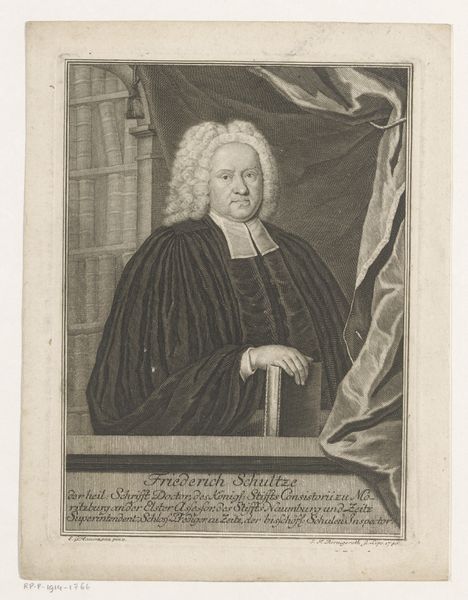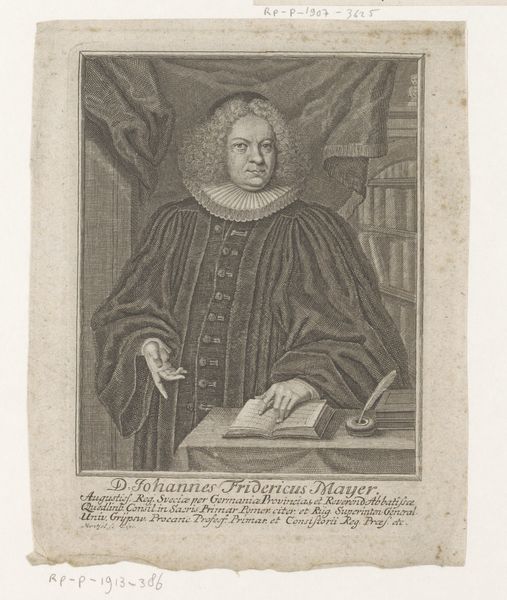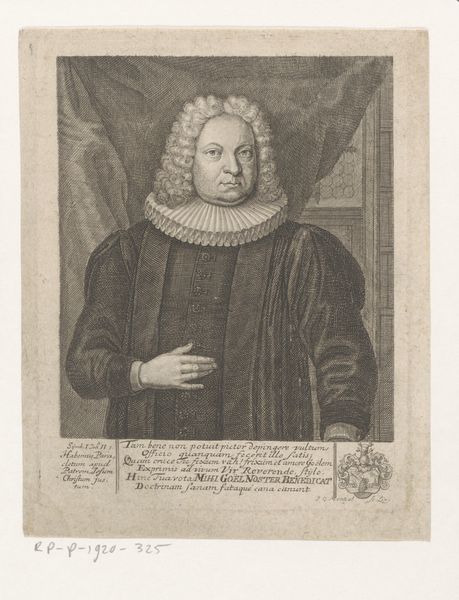
engraving
#
portrait
#
baroque
#
historical photography
#
history-painting
#
engraving
Dimensions: height 175 mm, width 138 mm
Copyright: Rijks Museum: Open Domain
Curator: Editor: Here we have "Portret van Johann Hermann Schrader," an engraving from 1736, located in the Rijksmuseum. The precision of the lines and the almost photographic detail strike me. What draws your attention? Curator: The question I always ask myself is: how was this image made, and what work did it entail? Look at the clothing; consider the ruff, the robes, even the books themselves, reproduced via the laborious process of engraving. It speaks to a culture obsessed with appearance and legacy, achievable only through considerable labor and expense. What can we learn from the material conditions of its production? Editor: So you're suggesting the value isn't necessarily in the subject, Johann Hermann Schrader, but in understanding the societal value placed on his image and how that’s communicated through the craft of engraving? Curator: Precisely! It’s about shifting focus from individual genius to collective effort, and understanding art as a product of its socio-economic environment. The engraving medium itself makes this accessible and reproducible, but how did this impact its reach and influence at the time? Who was the intended audience? Were they local citizens, nobles or political peers? Editor: That's a fascinating way to look at it. I hadn’t considered the socio-economic aspect of image creation. How accessible would this have been? Curator: The multiple reproduction of prints means dissemination was relatively simple, thus increasing his societal standing. Editor: Okay, that recontextualizes the portrait entirely. Instead of a simple depiction of an individual, it's a testament to the technology and labor involved, revealing societal values and class. I see what you mean about collective effort. Curator: Indeed. The art lies not just in the finished product but also in unpacking the means of its production and the social structures that made it possible. A dialogue between material and meaning, so to speak!
Comments
No comments
Be the first to comment and join the conversation on the ultimate creative platform.













